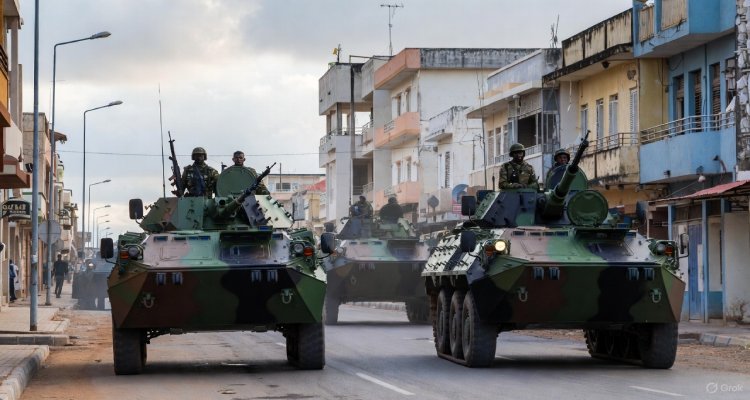India Strikes Back: Inside Operation Sindoor
India’s Operation Sindoor is a bold response to the Pahalgam terror attack, showcasing New Delhi’s zero-tolerance stance on terrorism and regional security. Discover how India’s military strategy disrupted Pakistan’s terror infrastructure.
India Strikes Back: Inside Operation Sindoor
In the wake of a harrowing terror attack in Pahalgam that claimed 26 lives, India launched a precision military offensive that has not only reverberated across the Line of Control but also sent a strong message to the global community. Branded as Operation Sindoor, this counter-terrorism mission by the Indian Armed Forces is being hailed as a critical pivot in New Delhi’s strategy to dismantle cross-border terror networks.
From Pahalgam to Precision: What Sparked Operation Sindoor
The brutal assault on April 22 in the picturesque region of Pahalgam shattered the silence of a peaceful valley. What followed was swift and resolute. Indian intelligence, acting on concrete inputs, mapped terror training camps run by groups like Lashkar-e-Taiba, Jaish-e-Mohammed, and Hizbul Mujahideen inside Pakistan and Pakistan-occupied Kashmir (PoK). In a coordinated response, India struck multiple high-value targets, dismantling not just physical infrastructure but also striking a psychological blow to terror groups operating under Pakistan’s shadow.
Operation Sindoor: Tactical Brilliance and Strategic Messaging
The Indian military operation was not merely reactive—it was deeply strategic. Utilizing advanced drone systems like the Israeli-origin Harpy, the forces neutralized Pakistan’s radar capabilities, including a major air defense system stationed in Lahore. Military analysts suggest that disabling these assets could significantly impair Pakistan’s ability to detect or retaliate against future aerial incursions.
According to reports from ANI and statements by the Indian Ministry of Defence, the operation led to the elimination of at least 100 terrorists and the destruction of nine terror launchpads. Notably, India’s S-400 Sudarshan Chakra missile systems played a crucial role in countering aerial threats during this high-risk mission.
Home Front Solidarity: Government and Opposition Show United Front
At an all-party meeting convened to discuss the unfolding situation, political leaders from across the spectrum, including Rahul Gandhi and Mallikarjun Kharge, expressed unanimous support for Operation Sindoor. Home Minister Amit Shah emphasized that this operation underscored India’s unwavering commitment to its national security doctrine—one that tolerates no threat to its sovereignty or citizens.
Shah noted that this unified national stance boosted public morale and sent a clear signal to adversaries that internal political differences take a back seat when national security is at stake.
International Ripples: US and EU React to Growing Tensions
The aftermath of Operation Sindoor also caught international attention. The U.S. Consulate in Lahore issued an advisory urging American citizens to evacuate or shelter in place amid reports of drone strikes and disrupted air defenses. Meanwhile, the European Union condemned the Pahalgam attack unequivocally, asserting every nation’s sovereign right to defend its people against terror threats.
However, the EU also appealed for restraint from both India and Pakistan to prevent further civilian casualties and regional destabilization.
Pakistan’s Response and Propaganda Pushback
As expected, Pakistan retaliated with ceasefire violations across several sectors, including Kupwara, Uri, and Rajouri. But what followed was also a familiar playbook—disinformation. The Indian government’s fact-checking arm quickly moved to debunk propaganda circulating through Pakistani media, reinforcing India’s narrative of targeted, proportionate retaliation against terror infrastructure—not civilians.
Shashi Tharoor, Congress MP, accused Pakistan’s military of orchestrating the Pahalgam attack to regain domestic relevance and international attention, especially amid internal unrest and economic instability in Pakistan.
The Road Ahead: Vigilance, Diplomacy, and Deterrence
As Operation Sindoor enters its next phase, the Indian leadership remains vigilant. Defence Minister Rajnath Singh confirmed that the operation is still active, with further action contingent on Pakistan’s behavior. Experts suggest India’s calibrated military strategy and information warfare reflect a maturing national security posture—assertive, yet measured.
Political leaders like Asaduddin Owaisi have called for an international campaign to designate Pakistan-backed outfits like the Resistance Front as terrorist organizations, further tightening the diplomatic screws on Islamabad.
Conclusion: A Defining Moment in India’s Counter-Terror Playbook
Operation Sindoor marks more than just a military maneuver—it is a statement of resolve. By aligning diplomatic consensus, military precision, and public unity, India has shifted the regional narrative. This moment is a reminder that in an era where non-state actors often blur the lines of warfare, decisive state action rooted in strategy and solidarity is key to preserving peace and sovereignty.
As tensions simmer, one truth stands out: India’s response to terror has evolved—from reactive outrage to calculated deterrence. And the world is watching.
Disclaimer:
This article is a reimagined journalistic piece based on public reports and official statements. It does not reflect any classified military operations or sensitive government information. For verified updates, refer to official government sources.
source : Times of India











